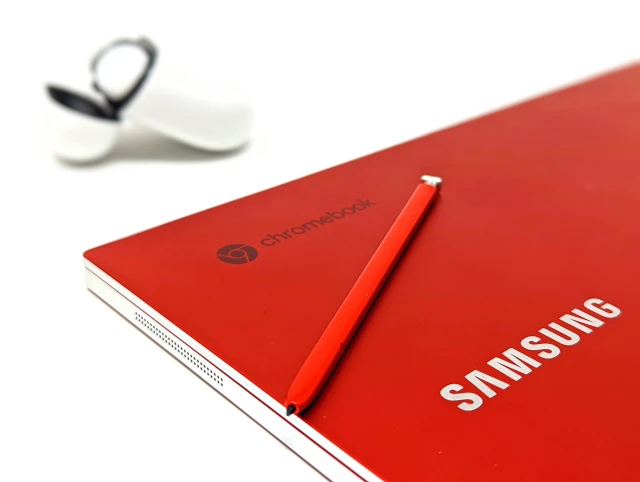Samsung, a South Korean multinational conglomerate, has established itself as a global leader in various industries, including electronics, appliances, and mobile communications. Its marketing strategy is a fascinating study of innovation, brand positioning, and customer engagement. Here’s a detailed look at how Samsung’s marketing strategy sets it apart in a highly competitive market.
Understanding the Market and Audience
Samsung’s marketing strategy begins with a deep understanding of its market and audience, a key factor that has propelled it to become a global leader in various industries. The key to this approach lies in its diverse product range, which allows Samsung to cater to a wide array of consumers. From budget-friendly smartphones to high-end electronics, Samsung has designed its product portfolio to appeal to both cost-conscious buyers and those seeking premium, high-tech experiences. This broad spectrum of products enables Samsung to penetrate different market segments effectively.

The company’s global reach is further strengthened by its ability to implement localized strategies. Recognizing that consumer preferences vary greatly across different regions, Samsung adapts its marketing tactics to suit the cultural, economic, and social dynamics of each market. For example, in technologically advanced markets like South Korea and the USA, Samsung might emphasize its latest innovations and high-tech features. In contrast, in emerging markets, the focus might shift towards offering more cost-effective solutions without compromising on quality. This localized approach is not just about tweaking the product offerings but extends to advertising campaigns, customer service, and even the retail experience, ensuring that every touchpoint resonates with the local audience.
This deep market understanding and adaptation are not static but a continuous process. Samsung actively monitors market trends, consumer behaviors, and emerging technologies to refine its strategies. By staying attuned to the shifting landscapes of the global market and maintaining a flexible approach to its marketing strategies, Samsung not only meets but often anticipates the needs and preferences of its diverse customer base. This proactive stance is a testament to Samsung’s commitment to understanding and engaging with its audience, laying a solid foundation for its enduring market presence and success.
Innovation and Technology Leadership
Samsung’s position as a leader in innovation and technology is a pivotal aspect of its marketing strategy, setting it apart in a highly competitive industry. The company’s commitment to delivering cutting-edge products is evident in its significant investment in research and development. This investment ensures that Samsung’s offerings, from the latest Galaxy smartphones to state-of-the-art QLED TVs and smart home appliances, are equipped with innovative features that enhance the user experience and offer tangible benefits.
The core of Samsung’s technological leadership is not just in the advanced features of its products but also in the underlying research and development that drives these innovations. Samsung’s extensive patent portfolio, a clear indicator of its focus on technological advancements, plays a crucial role in maintaining its competitive edge. These patents are not merely for show; they represent real, tangible advancements in technology that directly translate into improved product offerings. This focus on technological innovation helps Samsung to not only meet but often exceed customer expectations, reinforcing its position as a leader in the tech industry.
Samsung’s approach to technology and innovation goes beyond mere product development. It’s about shaping the future of technology and setting new industry standards. By continually pushing the boundaries of what’s possible, Samsung has positioned itself at the forefront of technological advancements. This leadership is not just about being the first to market with new technologies but also about ensuring that these technologies are accessible and beneficial to a broad range of consumers.
Through its commitment to innovation and technological leadership, Samsung has created a brand identity that resonates with consumers who value cutting-edge technology and innovation. This strategy has not only helped Samsung in cementing its position in the market but also in building a loyal customer base that eagerly anticipates each new release, trusting that it will bring something new and exciting to the table.
Samsung’s Brand Positioning and Advertising
Samsung’s prowess in brand positioning and advertising is a key element of its marketing strategy, effectively differentiating it in a crowded marketplace. The company has skillfully crafted a brand image that resonates emotionally with its audience. Samsung’s advertisements often go beyond showcasing product features, delving into the emotional impact of technology in connecting people and enhancing daily life. This strategy of emotional branding makes Samsung more than just a manufacturer of electronics; it positions the brand as an integral part of people’s lives, enhancing and enriching their everyday experiences.
Celebrity endorsements and sponsorships also play a significant role in Samsung’s brand strategy. By associating with well-known personalities and major global events, such as the Olympics, Samsung enhances its visibility and appeal, particularly among younger demographics. These partnerships do more than just attract attention; they imbue the brand with a sense of prestige and aspiration. When consumers see their favorite celebrities using Samsung products or the brand being showcased at high-profile events, it creates a connection that goes beyond the product itself. This connection is key to building a brand identity that is both aspirational and relatable.

Samsung’s advertising strategies are not only diverse but also innovative. The company has a knack for creating campaigns that are both visually stunning and emotionally engaging. These campaigns are designed to tell a story, one that invites the audience to envision themselves as part of the Samsung experience. It’s a strategy that moves beyond traditional marketing tactics, building a narrative around the brand that consumers can connect with on a personal level.
Through a blend of emotional branding, strategic partnerships, and innovative advertising, Samsung has successfully positioned itself as a premium yet accessible brand. This approach has enabled Samsung to build a strong brand identity, one that appeals to a wide range of consumers and stands out in a highly competitive market. As Samsung continues to innovate and adapt its advertising strategies, it will be interesting to see how the brand evolves to meet the changing needs and expectations of its consumers.
Customer-Centric Approach
At the heart of Samsung’s marketing strategy is a customer-centric approach, emphasizing the importance of understanding and fulfilling consumer needs. This focus on the customer has been instrumental in shaping Samsung’s products and services, ensuring that they not only meet but often exceed consumer expectations. The company’s commitment to customer satisfaction is evident in how it incorporates feedback into product development, resulting in products that are not just technologically advanced but also tailored to the needs of the user.
Samsung’s understanding of consumer needs extends beyond the functionality of its products. The company recognizes that customer experience plays a crucial role in brand loyalty and retention. Therefore, it invests heavily in customer service, providing efficient and responsive support. This commitment to after-sales service is not just about resolving issues; it’s about building a relationship with the customer, one that fosters trust and loyalty. This approach helps Samsung in not just acquiring new customers but also in retaining existing ones, a critical factor in today’s competitive market.
Another key aspect of Samsung’s customer-centric approach is its attentiveness to market trends. The company actively monitors changing consumer behaviors and preferences, adapting its products and marketing strategies accordingly. This agility allows Samsung to stay ahead of the curve, anticipating and responding to consumer needs in a timely and effective manner. It’s not just about reacting to the market; it’s about leading it, setting trends that others follow.
Samsung’s customer-centric approach is a multifaceted strategy that encompasses product development, customer service, and market adaptability. By placing the customer at the center of its business, Samsung has not only established itself as a market leader but also as a brand that consumers trust and rely on. This approach has been pivotal in driving Samsung’s success and will continue to be a key factor in its future growth and market dominance.
Digital Marketing and Social Media Presence
Samsung’s digital marketing and social media presence form a cornerstone of its comprehensive marketing strategy. In today’s digital age, where social media influences consumer decisions more than ever, Samsung has adeptly harnessed these platforms to enhance its brand visibility and engagement. The company’s social media campaigns are a blend of creativity and interaction, designed to engage with a tech-savvy audience that values innovation and connectedness.
A key aspect of Samsung’s digital strategy is its active and dynamic presence on various social media platforms. From Facebook and Instagram to Twitter and YouTube, Samsung leverages these channels to showcase its latest products, share news, and interact with customers. These platforms are not just for broadcasting content; they are avenues for two-way communication where Samsung listens to customer feedback, answers queries, and engages in conversations. This active engagement helps build a community around the brand, fostering a sense of loyalty and belonging among its customers.
Samsung’s digital marketing is characterized by its innovative use of content. The company creates a wide range of content, from product announcements and reviews to engaging storytelling and interactive posts. This content is carefully crafted to resonate with Samsung’s diverse audience, ensuring that it is not only informative but also entertaining and relatable. By providing a mix of content types, Samsung keeps its audience engaged and interested, constantly reinforcing its brand presence in their digital lives.
Collaborations with influencers are another strategic component of Samsung’s digital marketing. These influencers, with their substantial followings on various social media platforms, help Samsung reach a broader audience. They provide a human touch to Samsung’s products, showcasing how they can be used in everyday life. This influencer marketing is particularly effective in reaching younger consumers who often look to social media influencers for product recommendations and insights.
Samsung also excels in using digital platforms for targeted advertising. By leveraging data analytics and consumer insights, Samsung ensures that its digital ads reach the right audience with the right message. This targeted approach ensures a higher engagement rate, making its advertising campaigns more effective and efficient.
Samsung’s digital marketing and social media strategy is a sophisticated mix of engagement, content creation, influencer partnerships, and targeted advertising. This multi-faceted approach has enabled Samsung to not only connect with its existing customer base but also to attract new customers, keeping the brand relevant and prominent in the ever-evolving digital landscape.
Samsung’s Marketing Strategy in Summary
Samsung’s marketing strategy is a blend of technological innovation, strong brand positioning, customer-centric practices, and effective use of digital platforms. By understanding and adapting to market trends and consumer preferences, Samsung has managed to stay ahead in the highly competitive electronics and tech industry.
- Diverse Product Range: Offers a wide array of products to cater to different market segments, from budget to premium consumers.
- Localized Marketing: Adapts strategies to fit the cultural, economic, and social nuances of each global market.
- Innovation Focus: Heavy investment in research and development to provide cutting-edge technology and advanced features in products.
- Patent Portfolio: Holds numerous patents, emphasizing its commitment to technological advancement and innovation.
- Emotional Branding: Uses emotional connections in advertising to make the brand more relatable and appealing.
- Celebrity Endorsements and Sponsorships: Collaborates with celebrities and sponsors major events to enhance brand visibility and appeal.
- Customer-Centric Approach: Prioritizes understanding and meeting customer needs, and maintains strong after-sales support for customer retention.
- Market Adaptability: Continuously monitors and adapts to changing market trends and consumer behaviors.
- Active Social Media Engagement: Utilizes social media platforms for customer engagement, brand promotion, and community building.
- Influencer Collaborations and Targeted Advertising: Partners with influencers for broader reach and employs targeted digital advertising for effective marketing campaigns.

